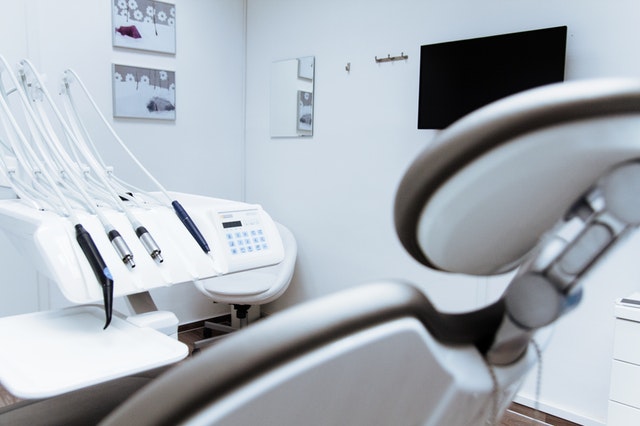Your skin is the most visible part of your body, and any blemishes on it stick out like a sore thumb. Further, it is subject to environmental factors from Day 1 of your life and as you age, time begins to take a heavy toll on it.
Apart from this factor, there are other external and internal elements too. Use of harsh and abrasive chemical laden cosmetic products and bad dietary habits are also responsible for a dull and lacklustre skin.
Whatever may be the reason, the face is the area that shows it all – acne, wrinkles, fine lines and freckles, everything. The list is never-ending. Ageing brings about its own set of problems like dark circles and sagging skin, one reason why there is a thriving multi-billion dollar beauty care industry promising a wide range of anti-ageing products and medications.
All assure miracle results, but most of these promises are never fulfilled. A good lifestyle can only delay the inevitable, and not stop the process entirely. That is when people turn to laser treatments for a young looking glamorous skin.
The principle behind laser skin treatment

Lasers are concentrated and focused beams of light that have high energy and can be directed precisely on an area of the skin being treated. The lasers ablate the skin to remove wrinkles and scars, cut skin tissues, and dead cells from the surface of the skin, giving way to a young and fresh look.
It also activates production of collagen, a protein that is a major component in tendons, muscles, ligaments and skin. When people age, collagen volumes go down, leading to sagging skin, wrinkles and fine lines. When lasers increase collagen output, the ageing process is partly reversed or at least stopped.
Some of the optimised skin treatments that can be carried out on laser technology based machines are the removal of unwanted hair and tattoos, acne scars, birthmarks, crow’s feet around the eyes and frown-lines.
Other ageing issues that can be addressed are vascular lesions, fine lines and wrinkles, uneven skin tone and texture and sagging skin. It is thus seen that laser treatments are effective for almost all types of skin blemishes and flaws.
This list is not exhaustive – constant innovation and the introduction of advanced and state of the art laser technologies have resulted in more and more skin issues being treated with lasers today.
3 Types of laser and IPL treatments

Laser procedures in skin care therapy are unique to the patient being treated. The wavelengths of the laser light, pulses and duration of each treatment session are all dependent on the individual patient’s requirements.
A lot also depends on how well the skin tissues absorb the lasers. All these vary from individual to individual and the reason why a dermatologist and technicians essentially require a detailed clinical examination at their skin care clinic before any procedure is initiated.
There are fundamentally two categories of lasers used in beauty care today – Ablative lasers and Non-Ablative Lasers.
Ablative lasers
In this technology, high-intensity beams focused on the surface of the skin remove dead and damaged cells as well as layers of aged skin. The collagen below the surface is also stimulated resulting in fading away of fine lines and wrinkles and leading to rejuvenated skin.
This is known as laser resurfacing. After a session is completed, an ointment and dressing is applied over the area. Once the area recovers from the treatment and heals, new skin is formed which is lighter and smoother in tone and texture.
There are two types of ablative lasers.
- Carbon Dioxide Laser (Co2) – This form of lasers is the oldest in use today. It was introduced in the ‘60s for skin rejuvenation but has seen a gradual decline in usage because of its side-effects. These include prolonged healing times, pain, itching sensations, risks of pigmentation and scarring. It has been widely used for the treatment of skin cancer, birthmarks, deep-set wrinkles, moles and sagging skin. This laser has now been largely replaced by fractional mode lasers that have fewer side effects.
- Erbium Yttrium-Aluminum-Garnet – This type of laser ideally helps to remove surface-level and not-too-deep wrinkles and lines on the hands, neck, chest and face without affecting the surrounding skin. Treatments typically include curing pigmentation and elimination of sun damage, fine lines, moderate wrinkles, pigmentation and moles. There is some element of bruising, redness and swelling after a session but these subside in one to two weeks.
IPL or Intense Pulsed Light therapy
Another light-based treatment that does not strictly fall in the laser category is IPL or Intense Pulsed Light therapy. Rays emitted from machines run on this technology have a broad spectrum which is scattered like the light from an incandescent lamp.
According to IPL-Machines.com.au, treatments on IPL devices are cheaper but do not work well on patients with dark skin tone and light hair. The results of treatment with laser machines and recovery period depend on the quality and technology on which the machines are based and the expertise of the technicians and the dermatologist carrying out the processes.
If you are looking for technologically advanced state of the art equipment for the beauty industry, consider visiting reliable and professional expert.
Non-Ablative Lasers
While ablative lasers heat up the surface of the skin while removing dead cells and sun-damaged skin, non-ablative lasers penetrate the surface of the skin layer. The lasers then stimulate collagen growth which in turn results in tightening of the skin, improvement of the skin tone and a fresh and young look.
There are three types of non-ablative lasers:
- Pulsed dye laser – This laser is used to treat birthmarks, spider veins, vascular lesions, broken capillaries, rosacea and stretch marks amongst others. The lasers directly target the blood vessels and shrink them, thereby reducing the redness of the skin. Around three to five sessions are required for permanent results. There is only an itching sensation during the process similar to a rubber band being repeatedly snapped against the skin. Redness and swelling immediately after the process subsides within a couple of hours.
- Nd:YAG Laser – Neodymium-doped Yttrium Aluminum Garnet (ND: YAG) is a high energy laser beam of light that creates heat and destroys the dead and deceased skin cells when focused over the area being treated. It is very useful in treating skin pigmentation issues, vascular and pigmented lesions, and spider veins. It is mostly used in permanent hair removal and elimination of tattoos. There are some itching and swelling after treatment but this lasts for a few days only.
- Alexandrite laser – This type of laser emits a wavelength of high energy light that is converted to heat energy during treatments. Alexandrite lasers are very precise and hence, the exact lesions and leave tissues can be treated without damaging the surrounding area. It is widely used in the treatment of birthmarks, brown spots, leg veins and hair and tattoo removal.
***
The views expressed on this page by the author it’s their own, not those of Best in Australia, and it shouldn’t be considered as advice.


